Click to view our Accessibility Statement or contact us with accessibility-related questions












Audiophile 101: Essential Gear Overview

search
close
Sort by: Newest
keyboard_arrow_down
Evshrug
4130
Keyboard Club Member
Jul 6, 2023
dm94aq7Drop is a big enough store to become a target; it’s not my job but I flag the spam I see and the site admins clean it up pretty fast. I’m sure they appreciate the help.

TravellingJay
10
Mar 24, 2023
Enjoyed the article.
One follow up question: When is a pre-amp necessary in a chain with headphones? I'm using Hifiman HE-X4 planars plugged directly into a laptop and it sounds fine - actually, better than fine...pretty dang good in an admittedly low end entry level set up. Is there an edge missing without a pre-amp, either SS or tube?

Evshrug
4130
Keyboard Club Member
Mar 24, 2023
TravellingJayA pre-amp can be used to raise the volume to 2 Volts (for line-level power), to adjust volume, or to add a coloration such as EQ or the euphoric effects of some tubes. A headphone amp basically would be serving as a pre-amp. In fact, some people use headphone amps as pre-amps for active speakers, because headphones have much higher sensitivity than speakers and thus the headphone amps typically have really low noise. I wish I had heard the HE-4x specifically, but I have heard the HE-4xx, 400i, and 400, and all of those had richer timbre and more enjoyable mids with a discrete headphone amp.
If you’re happy now, I’d say a discrete headphone amp is a want rather than a need, but it should also provide a nice upgrade if you ever want to try an amp, and that amp will probably be nice to have if you explore other headphones too.
(Edited)
timwat
8
Mar 22, 2023
Some great stuff, very well laid out.
From my anecdotal experience as a professional musician and recovering audiophile, it seems to me the one element that makes the most significant difference to the listening experience is your choice of transducer - your speakers. Choose wisely, and realize at the higher end of things, your choice of speaker may dictate the best options further upstream (for example, choosing large format planars like Magnepans will dictate amplifier choices).
Also, folks often underestimate the impact of the listening room itself upon the entire experience. But Drop doesn't sell room treatments, so it is left to the discriminating listener to DIY their research on that topic.

Evshrug
4130
Keyboard Club Member
Mar 23, 2023
timwatYes, system synergy can really make a difference, thus it makes sense to start planning based on the “end” of your audio chain and work your way back.
I would argue that the end of the audio chain (apart from your ears) is the room or space you’re listening in… which is why I mentioned it in the Speakers section! If you’ve got a tiny box room, it’s probably better to use small nearfield speakers than getting big floorstanding loudspeakers. And if you can’t treat the room (or you share a wall with other people) it might be best to consider open or closed headphones before setting up the rest of the chain!
However, people can start with simple setups and upgrade parts of their chain over time. People may start with an HD 6xx + Apple Dongle + smartphone, and those will contain all the parts people need to start hearing music, video audio, games, etc. But if someone wants better focused clarity and tighter punchier bass, hopefully this article will help guide them towards possible areas to focus on.

Evshrug
4130
Keyboard Club Member
Mar 23, 2023
timwatAlso, I’m still experimenting with room treatments myself… I only just moved out of apartment living and speakers have become a viable option. I’m hoping to self-produce a video about DIY room treatments really soon/next, starting with dirt cheap options because I have a super low “fun funds” budget 😂
PRODUCTS YOU MAY LIKE
Trending Posts in Audiophile

Leafwise
Show off your carry / bag / case / setup for your Head-Fi gear ✨
As subject, what do y'all carry your gear in for out-and-about/day-to-day and then for travel, if anything other than pockets?
Nov 19, 2024
keegu22
More bass!
I currently have the the HD 6XX, which sound great but, I'm am looking to upgrade the power of the bass as i really enjoy punchy low end EDM music. Any suggestions in the $200-$300 price range would be awesome.
Nov 13, 2024

danielj9
Trying to add Topping LA90D amp to Topping A9D preamp
Any help would be appreciated...I added an amp to my streamer, dac, headphone amp/preamp system and am now not getting any music through the headphone jacks on the preamp - the specifics: Wiim Pro Plus - optical connection to - Topping D50 iii dac - TSR to XLR connection to - Topping A9D headphone amp/preamp (all worked fine as a headphone amp until I tried adding:) - XLR connection to - Topping LA90 D amp. Amp switches are set to bypass, stereo, low gain. In this configuration, I am not getting any music to either my SE or XLR headphone jacks. I made sure I switched the A9D to "preamp" and "xlr" modes. I have no idea what I might be overlooking or missing...any thoughts would be deeply appreciated! Thank you.
Nov 11, 2024

Tremuh
Trying to find new headset
I currently am rocking the beyerdynamic DT 990 Pros and have been for a while now, along with a go xlr! I was trying to see what other headset you guys recommend along with something to replace the xlr? Thank you!
Nov 7, 2024

aiden.miller
Mic not working pc38x
I just got my pc38x in the mail today and the out put is quiet but fine and I'm happy. But the mic will not work when on my Xbox series and I was wondering if this issue can be resolved or if the head set is not compatible with Xbox.
Nov 4, 2024

Keys
Bluetooth tethered/wired earbuds?
Any good long lasting ones? I have a massdrop Stride, but i want wired earbuds that can be charged with usb-c
Oct 22, 2024

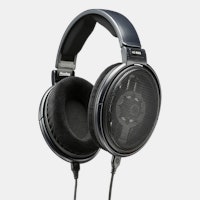
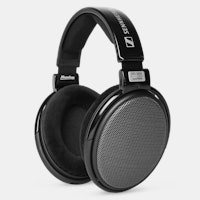
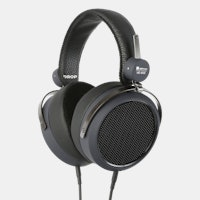
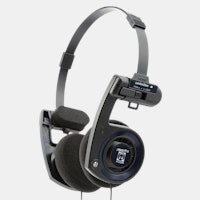
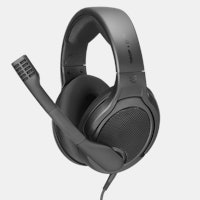
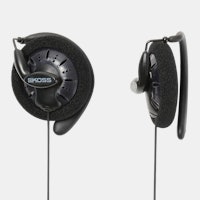
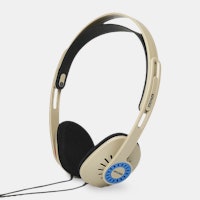
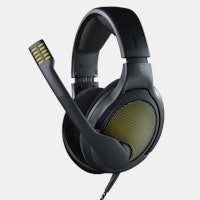
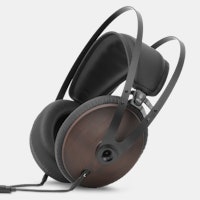
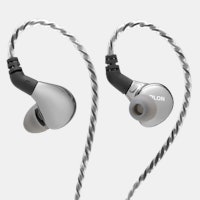


Image credit @zhugunic https://drop.com/talk/67372/gl-2-k Do I need an amp? What are these acronyms like DAC, DSP, or DSD? What even are all the components that make up an audio chain? Let’s take a beginner’s look at the core, essential building blocks of a digital audio chain, and lay it plain what each piece does. We can cover the major pieces separately, but I’ll still include a few tips to optimize playback here. Please hit the little bookmark button and feel free to check and share this guide whenever you need a reference! For people who need a visual and audible explanation, or are worried it would take too long to get a working knowledge of the audio chain, here is my YouTube video on this subject that is just 7 minutes long! I like writing though, so let’s get started with an overview, then break it down into what each piece does and how an upgrade would benefit the final sound quality. Signal Path
Image Credit @Hemini https://drop.com/talk/32509/runs-warm Next up, it’s the amplifier (also known as an amp)! There can be a pre-amp, which boosts the analog signal to the 2 Volt “line level” so that the signal doesn’t sound weak and anemic, and it does so with the best possible signal to noise ratio (lowest distortion). Some preamplifiers include analog EQ tone controls. After that, there is the power amp, which sets the signal level to whatever is appropriate to reach the desired output volume on your speakers or headphones. Most headphone amps are “Integrated Amplifiers,” meaning they are both pre and power amps at the same time, and usually have low enough distortion that you could use them as pre-amps with a speaker’s power amp. Different amps have different distortion profiles, as well as electrical interference shielding and hopefully a nice power supply to provide clarity and focus, as also mentioned in the analog section of a DAC. Some types of distortion are pleasant and make music more pleasurable or exciting, while some amps have vanishingly low distortion, and an amp that is too weak will sound anemic and have a strange unnatural timbre (“the character or quality of a musical sound or voice as distinct from its pitch and intensity,” New Oxford American Dictionary), as well as compressing the volume range and seeming to hit a “ceiling” for how loud the loudest sounds can get. Not all headphones need a more powerful amp for proper volume, but a clearer amp with a “blacker” quieter noise background benefits any headphone! Speakers
Image Credit @mrsallee https://drop.com/talk/88486/schiit-modi-dac-thx-aaa-one-amp-pre-sonus-eris-e-5 At the end of the signal chain are the speakers! Whether they be floorstanding loudspeakers or tiny in-ear headphone speakers, they feed the pulses of analog power through an electromagnet to push, pull, or flex some kind of transducer or membrane back and forth to create vibrations in the air, eventually reaching our ears. As evident by the many models sold on Drop, these can be designed to suit different tuning tastes, ergonomics, environments (such as closed Headphones to prevent sound from leaking in or out), amplification requirements, and of course offer different levels of performance in unmasking detail, separating sounds (often described as more “air” between instruments and notes), and giving the listener a sense of space. Many of these attributes are perceptible in speakers as well, though speakers additionally vary in their ability to “fill a room” with sound, and the room’s walls become just as much part of the sound reproduction as a horn around a speaker. Cables and Connections
Image Credit @Haulien https://drop.com/talk/24612/photo Lastly, there are all the interconnections between these components, the links in the audio chain. I didn’t forget cables! For digital interconnects, there are optical cables, coaxial (coax) cables, BNC connector cables, USB cables, I2S cables (they look like HDMI cables, definitely worth putting a label on them), and even the copper traces embedded in computer silicon to connect internal components. Analog cables can be single-ended or balanced (which we can discuss more in an article about amplifiers!). Single ended cables can be terminated with RCA plugs, 1/4 inch or 6.5mm plugs commonly seen on studio headphones or guitars, 1/8 inch or 3.5mm plugs commonly seen on portable headphones and headsets, XLR3 for single-ended connections or XLR4 for balanced, and also 4.4mm Pentaconn or 2.5mm plugs for balanced; speakers often connect with banana plugs, spades, or bare wire! Balanced connections need 4 connection surfaces like the 4 pins on an XLR4 connector or the tip - ring - ring - sleeve (TRRS) segments of a Pentaconn connector, while Single Ended connectors only need three connection points: one for feeding the right channel, one for left channel, and then the circuit is completed by summing the positive connections into a single common ground connection. Whether digital or analog cables, all metal cables send signals using pulses of electricity that surge and ebb (with optical being the notable exception, which has a red light brighten and dim rapidly along a fiber or glass optic cable like a really thick lens). High school physics teaches us that electricity and magnetism are dimensions of the same thing; all electric currents create magnetic fields, and wires act as antennas, so they must be shielded from other signals and can interfere with each other to some extent. Audible upgrades from cables is definitely worth a separate 101 article to clear up what cables can and cannot do, but it suffices to say here that you need the right cables to connect your components, and picking cables that are up to specification standards is not expensive but can be beneficial. It's also worth mentioning wireless connections. These include Bluetooth, Wi-Fi, and proprietary infrared and 2.4 gHz radio transmission! Bluetooth can be conveniently tangle-free and extend further than would be practical with wire, but the codecs and technology used for Bluetooth have improved substantially with each passing year. Not only can Bluetooth carry the full quality of Spotify, we now have codecs supporting near CD-quality levels of information! Check out my article where I argue that the time of quality bluetooth is finally here! WiFi and 2.4 gHz wireless use more power, but also can stream HiRes FLAC, and can be better optimized for gamers with low latency and quality chat audio. Analog-Only
Image Credit @kgebhardtdesign https://drop.com/talk/122676/fantastic-turntable An all-analog setup skips the DAC and everything before it. Sound waves are stored in vinyl grooves or on magnetic tape, and converted into electrical signals by either a turntable or tape player; in the case of the turntable it is followed by a special pre-amp called a Phono amplifier. The Phono amps the electrical signal up to line level, but it also applies an analog EQ called the RIAA Curve. The Recording Industry Association of America created this standardized curve to improve sound quality, permit longer recording times to fit on a platter (because otherwise bass tones would need to be really wide cuts into the vinyl), and reduce the wear and tear from vinyl playback. This EQ had to be an industry standard, so that a phono could be used with any turntable or vinyl from any record label, but the Phono itself is subject to all the same performance upgrades possible with any other amp. More to Come Whether you use an all-in-one combo or are planning a series of upgrades to your system, I sincerely hope that this article laid a good foundation for what goes into an audio chain. A big thanks to everyone who posted some fantastic customer images! Again, bookmark this in case it comes in handy as a future reference, share it if you think it would answer someone’s question, and leave a comment or question if you want me to shine a light on something as I write future articles expanding on each individual component. As I wrote on Head-Fi a dozen years ago, I’m still learning new things, but I’m happy to make use of what I’ve learned to give audio enthusiasts a shortcut to working knowledge!